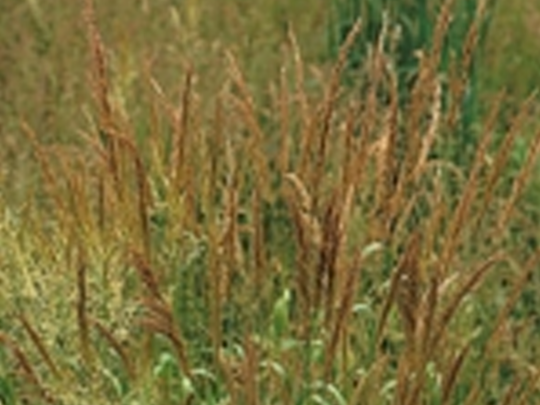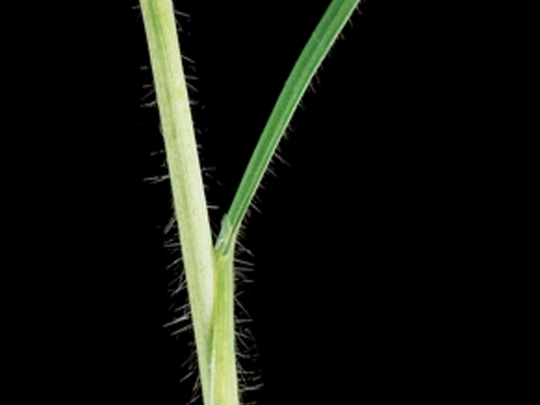Perennial tussock grass which shoots early in the year. 50–80 cm high golden stand which flowers from late May to September by continually producing new stem shoots with flowering heads. Golden oatgrass occurs mainly in highland and upland areas, and more rarely in lowland areas and on waysides. Prefers nutrient-rich soils. Average yields with good nutritional value can be expected in favourable conditions. Due to the risk of calcinosis, a health disorder caused by consumption of large quantities of golden oatgrass, only small amounts should be included in seed mixes. For this reason it scores a modest feed value of 6.
| Leaf | Leaf rolled in the bud, leaf sheath open with rather long, downy hairs. Leaf blade 3–6 mm wide, lightly to heavily ribbed, upper side with soft hairs, underside lightly haired. Ligule short, collar-shaped and often hairy. Auricles absent. Leaf shoot strongly upright, yellowish green. |
| Culm | Culm upright or geniculate at base. Culm 50–80 cm tall and forming side shoots on some lower nodes. Base of glabrous nodes often hairy. Sends forth new culms after cutting. |
| Inflorescence | Long panicle up to 15 cm with 5–8 side branches at each node. Panicle wide open during flowering, closed before and after flowering. 2–3 florets per spikelet. Upper glume twice as long as the lower lemmas, bicuspid, green to golden yellow with bent back awn. |
| Fruit | Grain 4–6 mm long and 0.8 mm wide, the back of the lemma bears a twisted awn approx. 4 mm long. Palea flat and papery. Pedicel slightly protruding with fan-like white hairs. TSW 0.5 g. |

